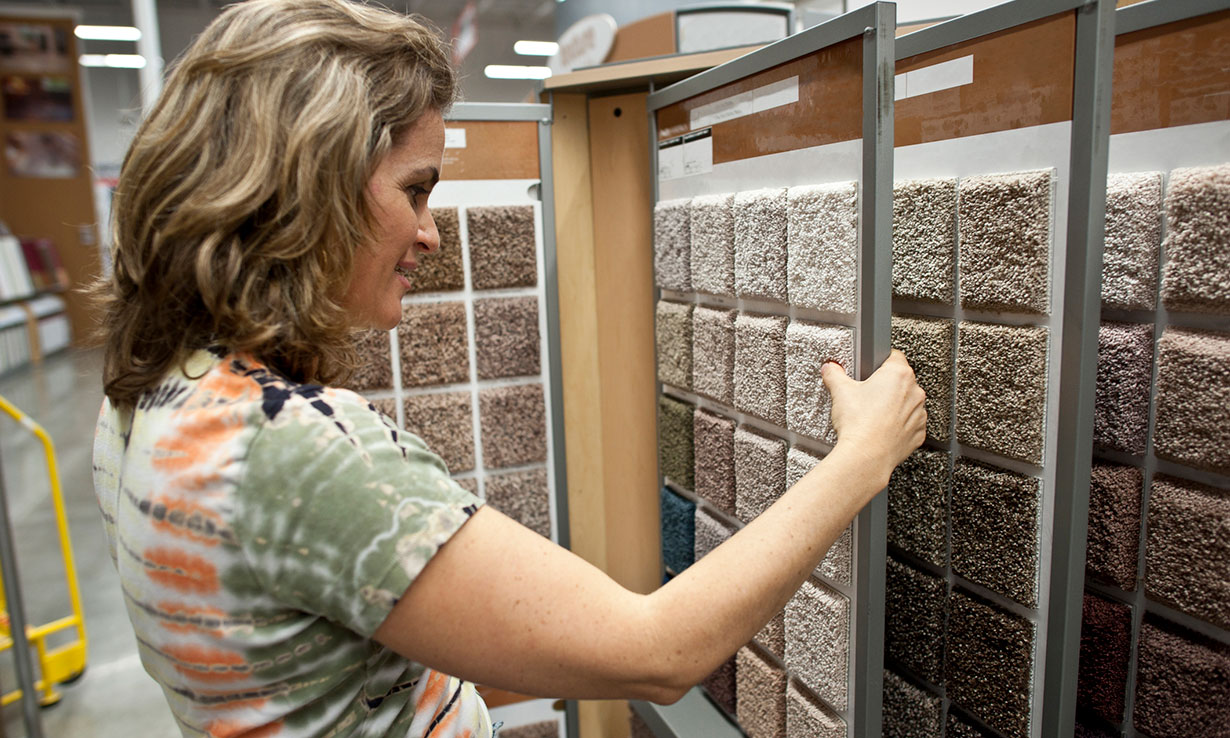By clicking a retailer link you consent to third-party cookies that track your onward journey. This enables W? to receive an affiliate commission if you make a purchase, which supports our mission to be the UK's consumer champion.
Four ways to save money on your new carpet

The costs of buying a carpet can quickly stack up. Although the initial price per square metre might be attractive, that doesn't alwaysrepresent the final price you'll pay.
As well as the cost of the carpet you need, you'll also often be charged for excess material, as carpets are sold in set widths that may not match up with the width of your room. You might also need to pay for underlay, fitting and extra accessories.
But with a bit of research beforehand and some savvy shopping, it's possible to get a bargain and save some cash.
Here are our four top tips. For more details, head to our guide to how to choose a carpet.
1. Choose the right material
Before you start shopping, think about your lifestyle and habits to make sure you choose the best material and price bracket for your needs.
Think about whether you're likely to change the carpet fairly soon, or if you have children or pets that will use the room and may cause spills or stains, advises Jackie Alabaster, managing director of Oakville Flooring Ltd and a Which? Trusted Trader.
'If you'll change the carpet after a few years, don't choose an expensive material, because you won't get the wear,' Jackie explained. 'But if you're going to keep it for 15 years, go for something like wool, because you'll get more wear out of it.'
If you need something that's easy to clean, Jackie advises sticking to synthetic materials, which tend to be more stain resistant.
Natural fibres such as wool are more likely to stain, meaning you'll be left with costly cleaning bills or you'll need to fork out for a replacement.
Not sure what carpet you need? Take our carpet quiz in our guide to different types of carpet.
2. Look out for offcuts and discontinued lines
Carpet stores often have an offcuts or remnants section, where they sell sections of carpet left at the end of rolls. These are usually discounted to clear so can be good value if you can find something that fits your space, particularlyif you're carpeting a smaller room.
So if you have a small flat or need something for a box bedroom, make the remnants section your first port of call for a bargain.
Choosing carpet lines that are being discontinued can also be a good way to save money. If you see price reductions outside big sale periods, it could be because the retailer needs to clear out old stock.
The downside is that there's only a finite amount of the carpet left, so you might find it's sold out before you can place an order.
If you're shopping for discontinued lines, make sure you have a back-up option or time to go back to the drawing board if you find it sells out.
Find carpet fitters and flooring experts you can trust at Which? Trusted Traders. Which? Trusted Traders go through a rigorous assessment that includes credit and reference checks and a visit from a qualified assessor.
3. Invest in the right areas

If you're carpeting more than one room, it might seem easier to choose the same carpet and underlay throughout.
But if one is your master bedroom and another is a spare bedroom that hosts visitors three times a year, it could be a waste.
'Spend the money on rooms where you'll get the most value,' Jackie says. 'If it's a spare room you could even use a felt-backed carpet, without underlay. It won't be as comfortable but if you're hardly using the room, it won't matter.'
Choose better-quality carpet for rooms that will be used most regularly, such as living rooms, hallways and your bedroom.
Work out the cost of carpet and underlay for your rooms with our handy carpet calculator.
4. Get an itemised quote
Getting a full breakdown of all the costs from your chosen retailer will show you exactly what you're paying for and help you find places to save money.
As well as the carpet itself, in most circumstances you'll also need underlay and the services of a professional carpet fitter.
Then there can be a host of extras, such as charges for removing your old flooring, door alterations and buying gripper rods to hold the carpet in place.
Simple steps such as shopping around for a better deal on underlay, clearing old flooring yourself, or reusing existing gripper rods if they're in good condition, could shave a considerable amount off your bill.
Find more money-saving tips in our guide to how to buy a carpet.
